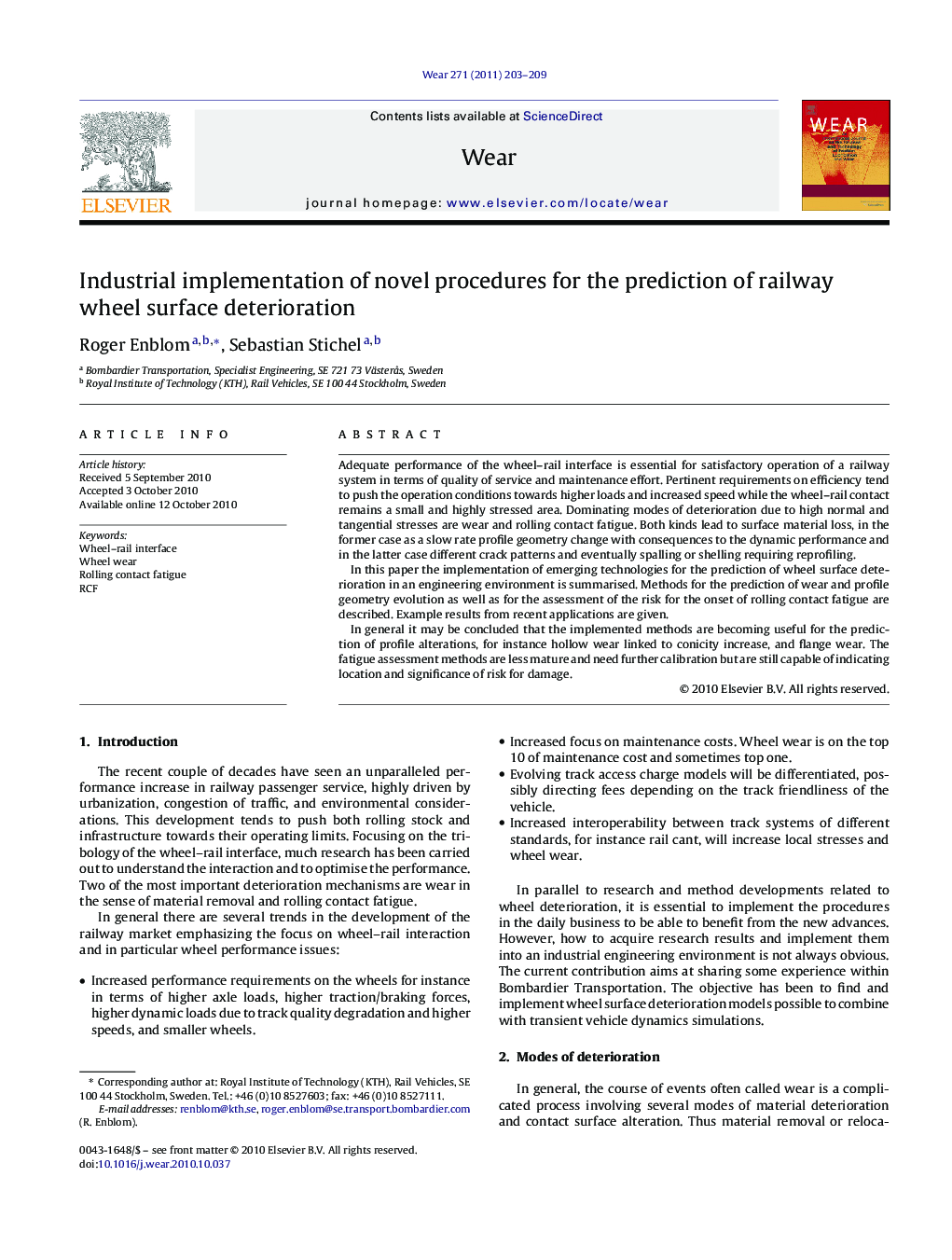| Article ID | Journal | Published Year | Pages | File Type |
|---|---|---|---|---|
| 618273 | Wear | 2011 | 7 Pages |
Adequate performance of the wheel–rail interface is essential for satisfactory operation of a railway system in terms of quality of service and maintenance effort. Pertinent requirements on efficiency tend to push the operation conditions towards higher loads and increased speed while the wheel–rail contact remains a small and highly stressed area. Dominating modes of deterioration due to high normal and tangential stresses are wear and rolling contact fatigue. Both kinds lead to surface material loss, in the former case as a slow rate profile geometry change with consequences to the dynamic performance and in the latter case different crack patterns and eventually spalling or shelling requiring reprofiling.In this paper the implementation of emerging technologies for the prediction of wheel surface deterioration in an engineering environment is summarised. Methods for the prediction of wear and profile geometry evolution as well as for the assessment of the risk for the onset of rolling contact fatigue are described. Example results from recent applications are given.In general it may be concluded that the implemented methods are becoming useful for the prediction of profile alterations, for instance hollow wear linked to conicity increase, and flange wear. The fatigue assessment methods are less mature and need further calibration but are still capable of indicating location and significance of risk for damage.
Research highlights▶ Coordinated approach to the prediction of wear and fatigue in the wheel–rail interface. ▶ Focus on industrial implementation of emerging methods in an engineering environment. ▶ Review of academy–industry relations in the actual context.
